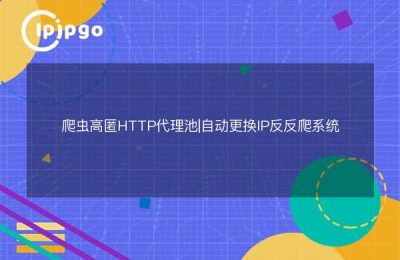
In this era of information explosion, data is wealth. As a crawler developer, how to effectively obtain data and circumvent anti-crawler strategies is a skill that every crawler enthusiast must master. Today, we will talk about how to build an IP proxy pool to improve the efficiency of Scrapy crawler, while exploring some common anti-crawler strategies and ways to deal with them.
What are Scrapy crawlers and IP proxy pools?
Scrapy is a powerful Python crawler framework that can efficiently crawl web data. However, with the continuous upgrading of anti-crawler technology, a single IP address frequently accessing the same website can be easily recognized and blocked. At this point, IP proxy pools are especially important.
An IP proxy pool, as the name implies, is a "pool" containing multiple proxy IP addresses. By rotating these IP addresses, a crawler can masquerade as a number of different visitors, thus reducing the risk of being banned.
Steps to build an IP proxy pool
Building an efficient IP proxy pool is not complicated, but requires some patience and skill. Here are the detailed steps:
1. Obtain a proxy IP
First, you need to find a reliable proxy IP provider. There are many free and paid proxy IP services on the market. Free services are cheaper but tend to be less stable and faster. Paid services, on the other hand, usually offer higher quality IP addresses.
For example, you can use some well-known proxy IP service providers, such as "IPIPGO", "Apocalypse Proxy IP" and so on. After getting the proxy IP, save it to a list for backup.
2. Setting up the agent pool
Next, we need to write code to manage these proxy IPs. you can use Python's requests library to test the availability of each proxy IP and save the available IPs into a pool.
import requests
def get_proxies():
# This assumes that you have already gotten a list of proxy IPs
proxies = ["http://123.123.123.123:8080", "http://124.124.124.124:8080"]
valid_proxies = []
for proxy in proxies:
try: response = requests.get("")
response = requests.get("http://www.example.com", proxies={"http": proxy, "https": proxy}, timeout=5)
if response.status_code == 200.
valid_proxies.append(proxy)
except: valid_proxies.append(proxy)
valid_proxies.append(proxy) except.
return valid_proxies
proxy_pool = get_proxies()3. Integration into Scrapy
The final step is to integrate the proxy pool into Scrapy. In Scrapy's settings.py file, add a middleware to dynamically switch proxy IPs.
DOWNLOADER_MIDDLEWARES = {
'myproject.middlewares.ProxyMiddleware': 543,
}
class ProxyMiddleware.
def __init__(self).
self.proxy_pool = get_proxies()
def process_request(self, request, spider): proxy = random.choice(self.proxy_pool).
proxy = random.choice(self.proxy_pool)
request.meta['proxy'] = proxyAnti-crawler strategies and countermeasures
In addition to using proxy IPs, understanding and responding to anti-crawler tactics is crucial. Here are some common anti-crawler tactics and how they can be countered:
1. User-Agent detection
Websites usually recognize crawlers by detecting User-Agent. Therefore, we need to randomize the User-Agent to disguise as a different browser.
USER_AGENTS = [
"Mozilla/5.0 (Windows NT 10.0; Win64; x64) AppleWebKit/537.36 (KHTML, like Gecko) Chrome/58.0.3029.110 Safari/537.3", "Mozilla/5.0 (Windows NT 10.1; WOW64; rv:54.0) Gecko/20100101 Firefox/54.0",
"Mozilla/5.0 (Windows NT 6.1; WOW64; rv:54.0) Gecko/20100101 Firefox/54.0",
"Mozilla/5.0 (Windows NT 6.1; WOW64) AppleWebKit/537.36 (KHTML, like Gecko) Chrome/55.0.2883.87 Safari/537.36"
]
class UserAgentMiddleware.
def process_request(self, request, spider): user_agent = random.choice.
user_agent = random.choice(USER_AGENTS)
request.headers['User-Agent'] = user_agent2. IP blocking
As mentioned earlier, using an IP proxy pool is an effective way to deal with IP blocking. In addition, you can set a reasonable crawling speed to avoid visiting the same website frequently.
DOWNLOAD_DELAY = 2 # 2 seconds between each request
3. Captcha
CAPTCHA is one of the trickiest anti-crawler strategies. For simple CAPTCHAs, try using OCR technology to recognize them; for complex CAPTCHAs, it is recommended to enter them manually or find ways to bypass them.
concluding remarks
Building an efficient IP proxy pool doesn't happen overnight, it requires constant debugging and optimization. At the same time, understanding and responding to various anti-crawler strategies is a must for every crawler developer. I hope this guide will help you to make your crawler project smoother and more efficient.
Remember, crawler development is not just a battle of skills, it's a battle of wits and strategy. Way to go, data hunters!








